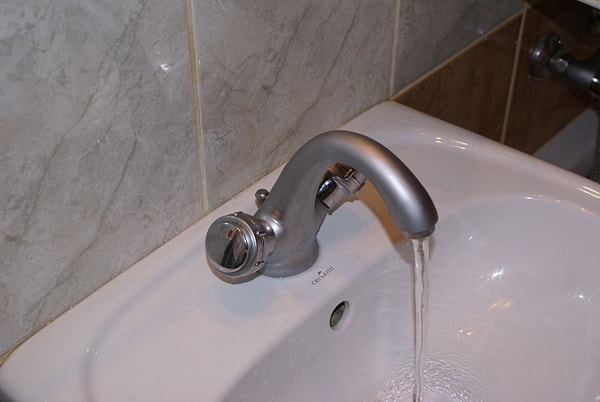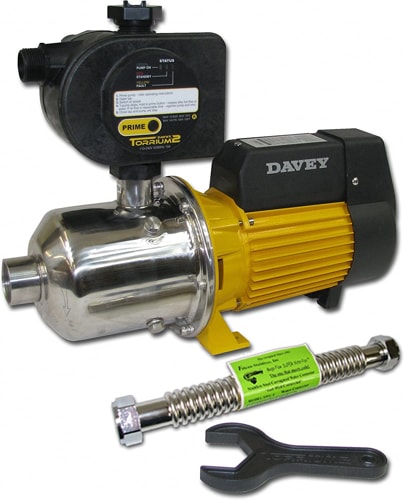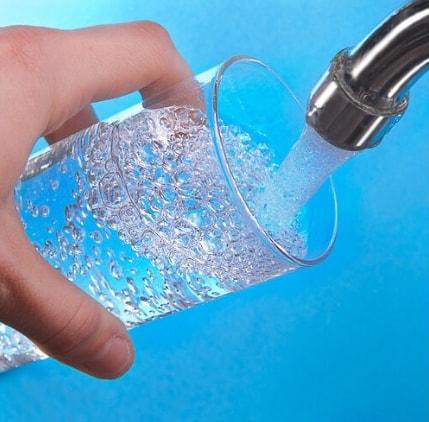Reasons behind Well Water Pressure Fluctuation
Pressure Switch Problems
Pressure switches turn your well pump on/off at pre-set pressure setting. You can experience fluctuations if there is a wrong setting on the pressure switch or the pressure switch has gone bad. The air pressure in water pressure tank must be 2-3 PSI less than cut-on value on pressure switch.
Well Pump Problems
A malfunctioning well pump may be the reason why water pressure is not constant. Maybe, the pump has started to wear out or heats up quickly, thus failing to draw water at a constant rate.
Well Problems
A reduced water level in the well, clogged well screen, stuck check valve, or broken/clogged/corroded well pipe can also fluctuate/reduce water pressure.

Pressure Tank Issues
A waterlogged pressure tank is often the culprit behind pressure fluctuation. The tank has an air bladder or a diaphragm that maintains a certain air-to-water pressure setting. The air pressure on your water tank is set 2-3 PSI less than the pressure switch’s cut-on point. For example, if the pressure switch is set to 40/60, the air pressure inside the water tank must be 37-38 PSI.
The airbladder may rupture, resulting in pressure switch problems and pressure fluctuation.
Blocked or Narrow Pipes
Most private wells have hard water. Hard water contains high concentrations of minerals like calcium and magnesium. These minerals deposit in plumbing pipes, aerators, and showerheads over time. The deposits restrict water flow and you see a drop/fluctuation in water pressure.
These deposits usually happen when you don’t have a water softener installed in your home. You can check this by removing a section of pipe and see if it has yellow/orange deposits, scale, or sediment. This requires cleaning your plumbing pipes to restore water pressure.
Clogged Plumbing Fixtures
Minerals in well water also clog plumbing fixtures. The white scale in bathtubs, showerheads, faucets, and appliances also block them internally. This can lead to reduced pressure at the point of use while the pressure at other faucets would be fine. You can clean the faucets with deposits to check if it restores the pressure.
Trapped Air in Pipes
Trapped air inside water pipes can cause pressure drops. However, you can get rid of trapped air by running the taps for a few minutes.
Issues with Water Treatment Systems
Almost all homes with private wells have a water treatment system installed. Your filter may be too small to handle your water demand, or a clogged cartridge is causing pressure drop. Inspect your filter cartridges and replace them if required. Some filters have pressure gauges to monitor water pressure. These gauges can help you identify filter-related pressure drops.
High Demand
Temporary fluctuation can also happen due to higher demand at one point in time. Maybe you are using more water than your well, pressure tank, and filtration system can handle.
How can I Stop Well Water Pressure from Fluctuating?
What to do if the pressure fluctuation doesn’t stop after running some water from the tap? Is there a permanent fix to the problem? Let’s find out!
Checking Pressure Pump
Check the settings on your pressure pump, or get it inspected by a professional. Make sure that the pump is operating correctly with the right pressure settings. Pay attention to the pressure switch to see if it works correctly.
Checking Water Pressure Tank
A smaller pressure tank or a malfunctioning pressure tank can be the reason why pressure fluctuates in your home. You can check the pressure tank or replace it with a better and larger one to eliminate pressure drop problems.
Water Pressure Booster Pump
A pressure booster pump is installed to increase water pressure in the upper story of your home or for rooms located far away from well. Pressure booster pumps are frequently used in irrigation systems and if residential unit is far away from the well.

Constant Pressure System
A constant pressure system is a costly but most effective way to eliminate pressure fluctuations. Constant pressure systems adjust the pressure according to demand. It results in a constant stream of water without fluctuation.

Is it normal for well water to fluctuate?
Yes. Most private homeowners report pressure fluctuation. However, this isn’t too frequent if your pressure tank and pump work optimally.
How can you troubleshoot fluctuating well water pressure problems if the pressure tank is waterlogged?
Well pumps are set at a constant pressure. For example, 20/40, 30/50, or 40/60 PSI. When the water pressure in the pressure tank goes below the low setting (20, 30, or 40), the pump turns on and runs until the pressure reaches the upper limit.
Here’s how you can troubleshoot a waterlogged pressure tank.
- Turn off the power to your tank and empty it and bypass any water treatment units before emptying the tank.
- Connect a pressure gauge to the pressure valve at the top of the tank. The pressure must be 2-3 PSI less than the low point setting on your well pump. If the pressure is low, use an air compressor to add air to the tank or release some air.
- Turn on the well pump and see if it’s working.
- This is the maximum you can do to fix a waterlogged tank. You’ll have to replace the tank if this doesn’t work.
- Some older models don’t have a bladder in them. These models can be repaired if there’s a leak, but we don’t recommend doing it because it is risky.
What is the difference between water pressure and flow rate?
Water Flow: How much water comes out of your tap? It is measured in gallons per minute (GPM).
Water Pressure: How fast does water come out of your tap? It is measured in pounds per square inch (PSI).
Why does only hot water pressure fluctuate?
Many well owners or even city water users report that only hot water pressure fluctuates. If this is the case with you, the culprit is a failing water heater. The minerals in well water deposit in a water heater, ultimately reducing water pressure.
You can get the heater serviced, or you’ll have to replace it if the servicing doesn’t work.
Why is my shower pressure low?
Low water pressure at one shower/faucet or appliance doesn’t necessarily mean your well’s water pressure is low. The showerhead may inherently have a low flow rate, or the pipes leading toward the shower are clogged.
Mineral deposits in the showerhead may also reduce water output. You can conveniently clean it with vinegar and baking soda. Sometimes trapped air in the showerhead may also reduce the water pressure. A failing water heater can also cause low pressure in hot water faucets.
What can I do if my city water pressure fluctuates?
Your local government is responsible for maintaining a smooth water supply to your home. It is highly unlikely that the problem is at your supplier’s end. Such issues are notified timely by the authorities. The common reasons a home using city water may face pressure fluctuation include.
- Corroded or clogged pipes
- Increased water usage in your area
- Clogged faucets/showerheads
- Problems with the main water supply line
- Issues with water treatment systems
- Air in the pipes
